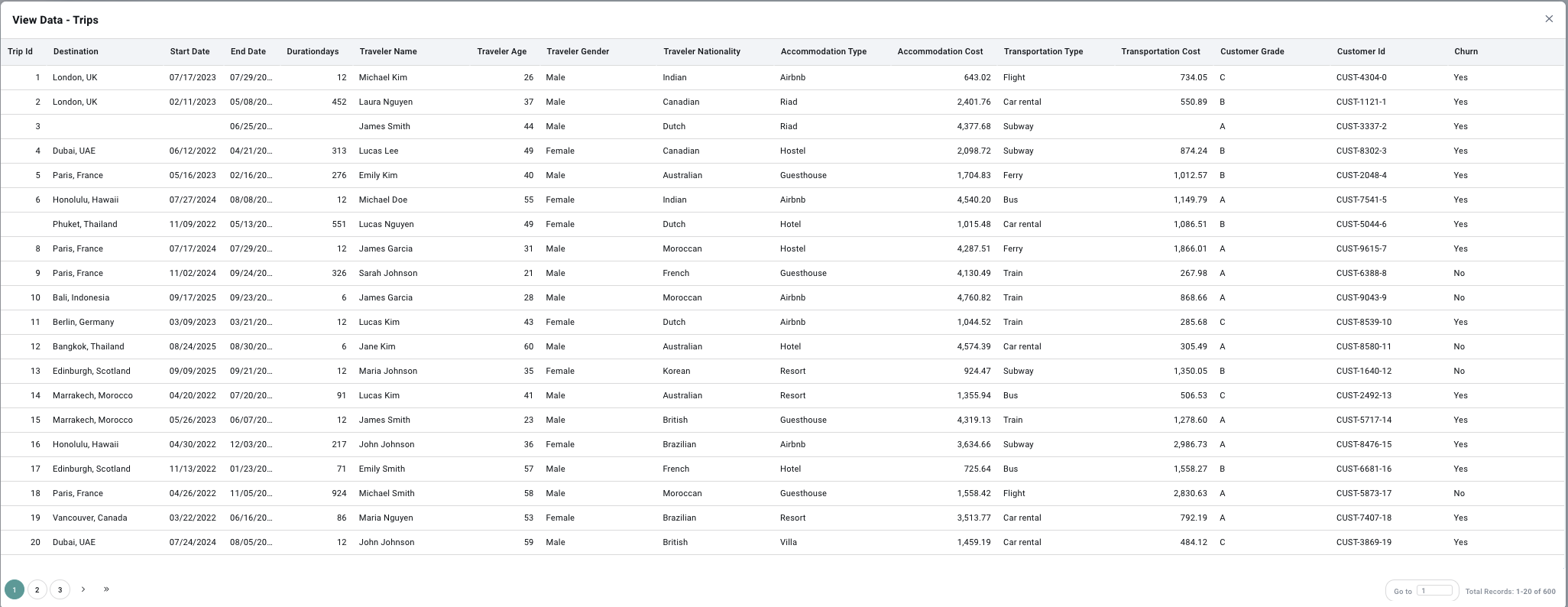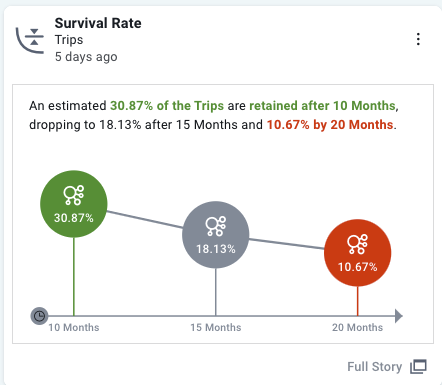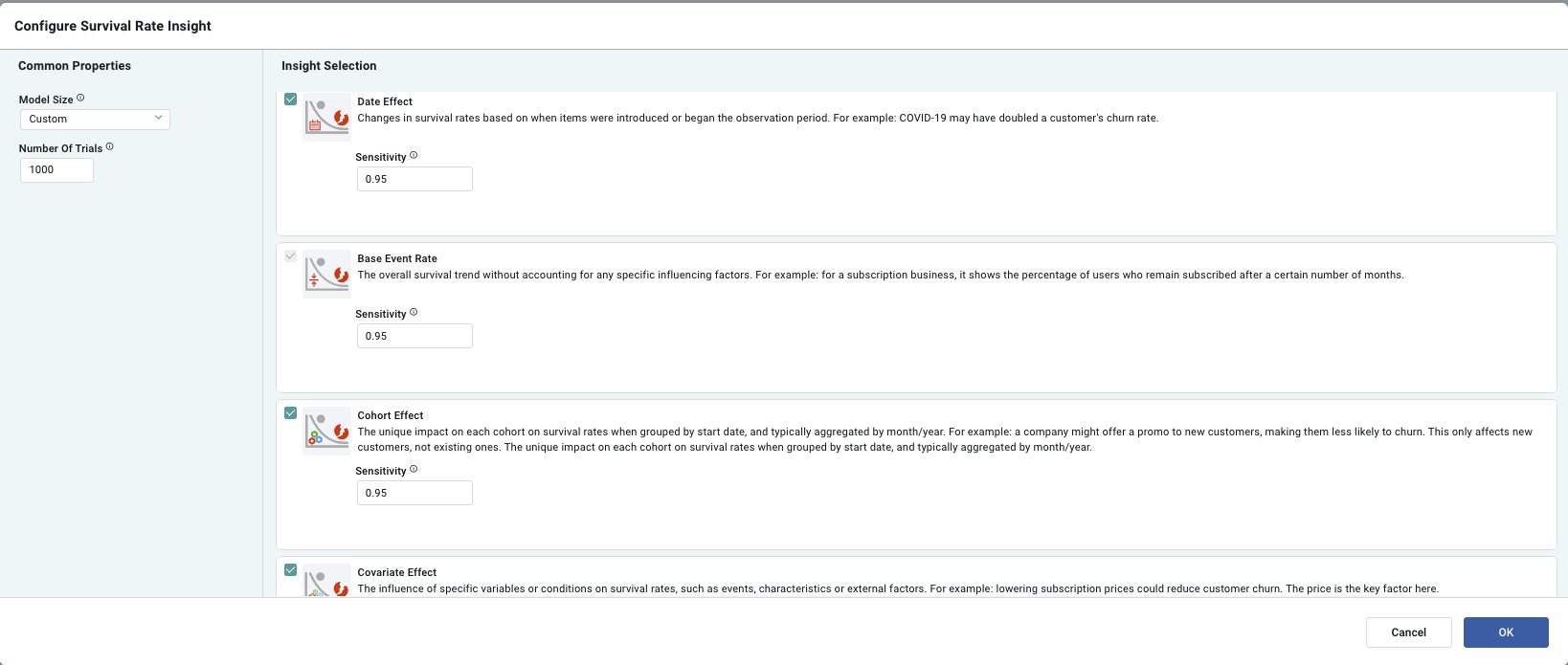Intended audience: end-users data science developers
AO Easy Answers: 4.3
Overview

Tracks the probability of customers remaining active over time to identify critical churn points.
Purpose
The purpose of Survival Events Insights is to analyze the likelihood of events such as customer churn, equipment failure, or user retention over time. This allows organizations to predict and mitigate risks, optimize strategies, and make data-driven decisions based on the patterns of retention or failure in specific cohorts.
Business Example
A travel company wants to understand how accommodation expenditure impacts customer retention. By predicting customer survival events, the company identifies key moments when churn risks are higher and strategizes targeted promotions or loyalty programs to retain high-value customers.
Scenario
-
You're tracking customer retention using their unique Customer ID.
-
Customer lifecycle begins at the first trip (
Start Date) and ends either at churn (Churn) or at the last trip recorded (End Date). -
Month/Year granularity is used to clearly track survival patterns over defined time periods.
-
Accommodation Cost acts as a covariate, influencing customer survival (higher or lower-cost accommodations may influence customer loyalty).
-
Churn status is determined using a combination of the
Churnflag andEnd Date.
Results
-
Clearly indicates the period with the highest churn risk.
-
Demonstrates the relationship between customer survival rates and accommodation expenditures.
-
Identifies profiles of customers more likely to churn based on travel and accommodation spending patterns.
-
Enables actionable insights, allowing customer retention actions at critical lifecycle stages.
Data Sample

Infographics Insight

Full Story Insight


End User Configuration - using Easy Answers solution

Contact App Orchid | Disclaimer
